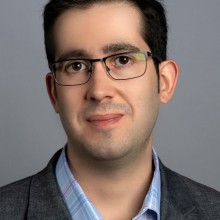Unleashing the Terahertz Band: From Near-Field Communications to Space Networks
The need for ever-increasing bandwidth is driving the research community to explore new spectrum frontiers. The sub-terahertz and terahertz bands (0.1–10 THz) offer a vast swath of untapped spectrum that could be used for many innovative communication and sensing applications. Additionally, the shorter wavelengths and the non-negligible photon energy of terahertz radiation open the door to innovative applications across scales. Over the last decade, remarkable progress in electronic, photonic, and plasmonic technologies has narrowed the terahertz technology gap. Moreover, in-depth studies on terahertz signal propagation, combining physics-based and data-driven approaches, have dispelled misconceptions surrounding the terahertz channel. However, several communication roadblocks must be overcome to unleash the spectrum above 100 GHz. This talk will follow a bottom-up approach to highlight innovative solutions and open challenges for terahertz communications and sensing systems on the ground, in the air, and in space. First, we delve into wavefront engineering for near-field THz links, showcasing novel beam types, including self-healing Bessel and curving Airy beams and discuss the unique opportunities these beams offer for short-range, high-capacity networks. Second, we demonstrate the advantageous role of THz frequencies in satellite communication networks, highlighting their potential for high-speed access links, and the upcoming, first-of-its-kind, TeraLink experimental mission.

Josep Miquel Jornet
Professor and Associate Dean of Research, Northeastern University on November 7, 2025 at 10:15 AM in EB2 1231
Join Zoom Webinar
Josep Miquel Jornet is Professor of Electrical and Computer Engineering at Northeastern University (NU), the Associate Dean of Research of the College of Engineering (COE), the Associate Director of the Institute for the Wireless Internet of Things (WIoT), and the Director of the Ultrabroadband Nanonetworking (UN) Laboratory. He received his Ph.D. in Electrical and Computer Engineering from the Georgia Institute of Technology, Atlanta, GA, in August 2013. His research interests are in terahertz communication networks, wireless nano- bio-communication networks, and the Internet of Nano-Things. He has co-authored more than 300 peer-reviewed scientific publications in these areas, including one book and five US patents. His work has received over 20,000 citations (h-index of 66 as of September 2025). He is serving as the lead PI on multiple grants from U.S. federal agencies, including the National Science Foundation, the Air Force Office of Scientific Research, and the Air Force Research Laboratory, and industry. He is the recipient of multiple awards, including the NSF CAREER Award in 2019, the 2022 IEEE ComSoc RCC Early Achievement Award, and the 2022 IEEE Wireless Communications Technical Committee Outstanding Young Researcher Award, among others, as well as eight best paper awards. He is a Fellow of the IEEE (Class of 2024) and served as an IEEE ComSoc Distinguished Lecturer (Class of 2022-2024). He is also the editor-in-chief of the Elsevier Nano Communication Networks journal and Editor for IEEE Transactions on Communications, IEEE Transactions on Molecular, Biological and Multi-scale Communications, and Nature Scientific Reports.
This lecture series features exciting and dynamic visiting and virtual speakers from across the range of ECE disciplines. Take some time every Friday morning to be inspired by these great scientists and engineers before heading into the weekend!
